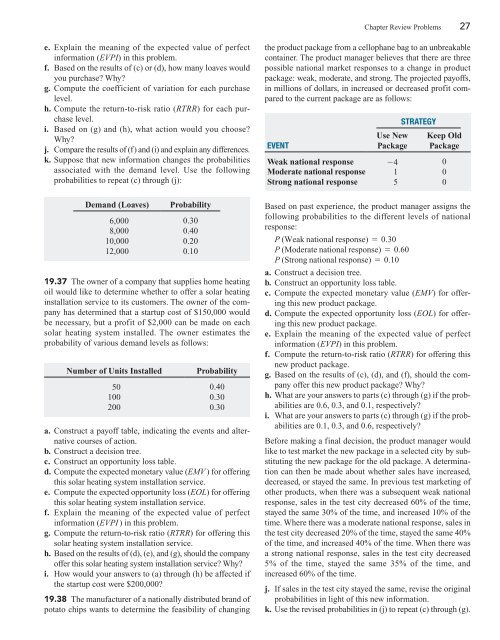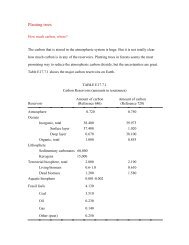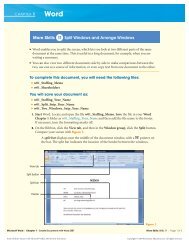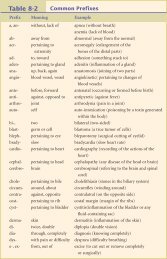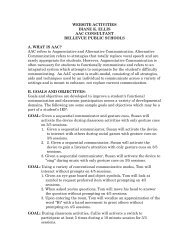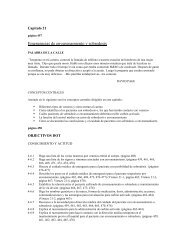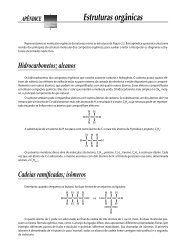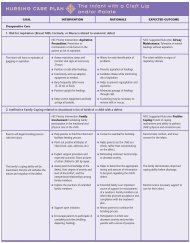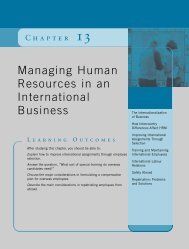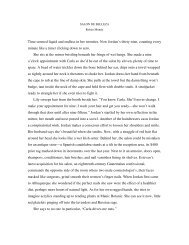19.1 Payoff Tables and Decision Trees
19.1 Payoff Tables and Decision Trees
19.1 Payoff Tables and Decision Trees
Create successful ePaper yourself
Turn your PDF publications into a flip-book with our unique Google optimized e-Paper software.
e. Explain the meaning of the expected value of perfect<br />
information (EVPI) in this problem.<br />
f. Based on the results of (c) or (d), how many loaves would<br />
you purchase? Why?<br />
g. Compute the coefficient of variation for each purchase<br />
level.<br />
h. Compute the return-to-risk ratio (RTRR) for each purchase<br />
level.<br />
i. Based on (g) <strong>and</strong> (h), what action would you choose?<br />
Why?<br />
j. Compare the results of (f) <strong>and</strong> (i) <strong>and</strong> explain any differences.<br />
k. Suppose that new information changes the probabilities<br />
associated with the dem<strong>and</strong> level. Use the following<br />
probabilities to repeat (c) through (j):<br />
Dem<strong>and</strong> (Loaves) Probability<br />
6,000 0.30<br />
8,000 0.40<br />
10,000 0.20<br />
12,000 0.10<br />
19.37 The owner of a company that supplies home heating<br />
oil would like to determine whether to offer a solar heating<br />
installation service to its customers. The owner of the company<br />
has determined that a startup cost of $150,000 would<br />
be necessary, but a profit of $2,000 can be made on each<br />
solar heating system installed. The owner estimates the<br />
probability of various dem<strong>and</strong> levels as follows:<br />
Number of Units Installed Probability<br />
50 0.40<br />
100 0.30<br />
200 0.30<br />
a. Construct a payoff table, indicating the events <strong>and</strong> alternative<br />
courses of action.<br />
b. Construct a decision tree.<br />
c. Construct an opportunity loss table.<br />
d. Compute the expected monetary value (EMV ) for offering<br />
this solar heating system installation service.<br />
e. Compute the expected opportunity loss (EOL) for offering<br />
this solar heating system installation service.<br />
f. Explain the meaning of the expected value of perfect<br />
information (EVPI ) in this problem.<br />
g. Compute the return-to-risk ratio (RTRR) for offering this<br />
solar heating system installation service.<br />
h. Based on the results of (d), (e), <strong>and</strong> (g), should the company<br />
offer this solar heating system installation service? Why?<br />
i. How would your answers to (a) through (h) be affected if<br />
the startup cost were $200,000?<br />
19.38 The manufacturer of a nationally distributed br<strong>and</strong> of<br />
potato chips wants to determine the feasibility of changing<br />
EVENT<br />
Chapter Review Problems 27<br />
the product package from a cellophane bag to an unbreakable<br />
container. The product manager believes that there are three<br />
possible national market responses to a change in product<br />
package: weak, moderate, <strong>and</strong> strong. The projected payoffs,<br />
in millions of dollars, in increased or decreased profit compared<br />
to the current package are as follows:<br />
Use New<br />
Package<br />
STRATEGY<br />
Keep Old<br />
Package<br />
Weak national response -4 0<br />
Moderate national response 1 0<br />
Strong national response 5 0<br />
Based on past experience, the product manager assigns the<br />
following probabilities to the different levels of national<br />
response:<br />
P (Weak national response) = 0.30<br />
P (Moderate national response) = 0.60<br />
P (Strong national response) = 0.10<br />
a. Construct a decision tree.<br />
b. Construct an opportunity loss table.<br />
c. Compute the expected monetary value (EMV) for offering<br />
this new product package.<br />
d. Compute the expected opportunity loss (EOL) for offering<br />
this new product package.<br />
e. Explain the meaning of the expected value of perfect<br />
information (EVPI) in this problem.<br />
f. Compute the return-to-risk ratio (RTRR) for offering this<br />
new product package.<br />
g. Based on the results of (c), (d), <strong>and</strong> (f), should the company<br />
offer this new product package? Why?<br />
h. What are your answers to parts (c) through (g) if the probabilities<br />
are 0.6, 0.3, <strong>and</strong> 0.1, respectively?<br />
i. What are your answers to parts (c) through (g) if the probabilities<br />
are 0.1, 0.3, <strong>and</strong> 0.6, respectively?<br />
Before making a final decision, the product manager would<br />
like to test market the new package in a selected city by substituting<br />
the new package for the old package. A determination<br />
can then be made about whether sales have increased,<br />
decreased, or stayed the same. In previous test marketing of<br />
other products, when there was a subsequent weak national<br />
response, sales in the test city decreased 60% of the time,<br />
stayed the same 30% of the time, <strong>and</strong> increased 10% of the<br />
time. Where there was a moderate national response, sales in<br />
the test city decreased 20% of the time, stayed the same 40%<br />
of the time, <strong>and</strong> increased 40% of the time. When there was<br />
a strong national response, sales in the test city decreased<br />
5% of the time, stayed the same 35% of the time, <strong>and</strong><br />
increased 60% of the time.<br />
j. If sales in the test city stayed the same, revise the original<br />
probabilities in light of this new information.<br />
k. Use the revised probabilities in (j) to repeat (c) through (g).


